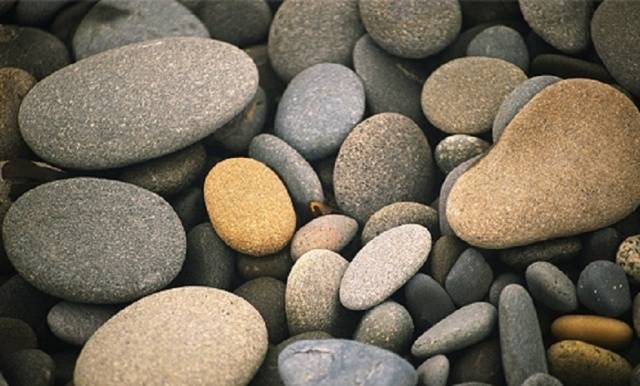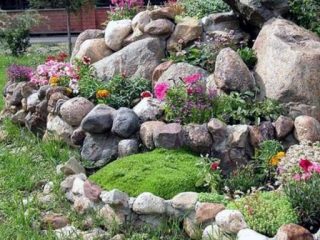Content
Amazing beauty is achieved when bright colors stand out against the background of greenery. This effect can be achieved on the site in various ways. One of the types of colorful creativity that is becoming increasingly popular is painting on stones with acrylic paints. For those who see such a design for the first time, it seems that it is simply impossible to make such masterpieces with your own hands.
In fact, painting stones can be done even by those who have no experience working with brushes and paints. An example is small children. Using a brush and several colors of paint, they create unique, bold designs that inspire admiration.
To get the same result, let's try to take a closer look at this cheap way of decorating a summer cottage or garden.
First of all, it is useful for beginning artists to become familiar with the basic stages of painting. This includes:
- Material selection. The main material for painting, of course, is stone.
- Creating a Sketch. This stage is required for beginners. Those who are confident in their creative abilities can easily do without a sketch.But in order for the design on the stone to be clear, it is better to draw it.
- Choosing a colorful palette and brushes. Color is very important in creating designs on stones, because the texture and surface can be different. Therefore, you will have to select color solutions based on the properties of the stones, and not just according to the intended ornament.
- Securing the pattern.
By strictly following this sequence, you can be sure that you will not only avoid mistakes, but also create bright patterns.
Beginning artists have a lot of questions, so each of them needs to be given due attention.
Tools and materials
What stones are suitable for painting? It is best to paint on smooth and flat stones.
Sea pebbles are perfect for drawing, but if the sea is far away, then you can choose a suitable material from the surrounding landscape.
Taking a close look at ordinary cobblestones and small stones, sometimes you can immediately see the plot of the future painting. The main thing is that the selected stone is smooth and has a dense structure. Porous stones require a lot of paint, they simply absorb it. But, if a piece of cheese is planned for the exhibition, then a porous stone is a good choice. Stones that have not been well-rounded or have sharp edges will not work. They are difficult to draw on. You should not take very dark cobblestones.
What should be done with the selected material? First, wash and dry well. After all, the chosen stone is often very dirty.
While the stone dries, prepare the paints. Those who are already engaged in such creativity paint with various paints - watercolor, gouache, acrylic. Experienced artists work with acrylic paints. Beginners are also advised to try this option.
Acrylic paints are available in a full range of bright colors and fit well on the surface of the stone even without primer. Another advantage is that they dry quickly. Although, especially for beginners, this factor will always have to be taken into account in their work.
Be sure to take precautions for your clothes, otherwise one drop can lead to a purely “homey” look. When working with stones, you need to place a small amount of paint on the palette. The surface of the stone is small, so excess paint will dry quickly. Acrylic paints are more expensive than others, but their quality for painting completely justifies the cost.
To paint on stones, you need brushes. You will need brushes of different widths.
In some cases, a toothpick will come in handy. Large brushes are needed to paint the background, and thin ones will help draw out various small details and strokes. When working with acrylic paints, you must ensure that the brush does not have time to dry. To do this, it is often placed in water. And when changing the tone or color in the painting, wash it well and dry it dry. Otherwise, the brush very quickly turns into a scraper, which will no longer work.
The list of materials includes a simple pencil for sketching a sketch on a stone. The second addition will be solvent and a cotton swab. They will be needed in case of corrections. Transparent varnish - to fix the design, and also primer or PVA glue.
Themes for creativity
It is often very difficult for a beginning artist to decide on the theme of a composition. There is desire, time and paint, but there is much less confidence that it will work out. Let's look at some examples of painting on stones that even a beginner can do. It will turn out very well.
Ornaments and geometric patterns
The most winning option.
Even with any inaccuracies or “punctures” with paints, such designs on stones look very catchy. They can simply be laid out among the grass on the lawn or between stones. It is very important to choose the brightest colors and a large number of colors for such fantasies. The more saturated, the more beautiful the pattern will be.
Fruits and berries
In this case, natural “sitters” are always at hand. You can copy paints and reliefs from your harvest. For example, strawberry:
Insects, birds, animals, fish
For those who doubt their talents, it will be enough to look at educational photos or videos for children. It's great to do this with your children. Painting on stone with acrylic paints will become more fun and useful.
Children, even without a textbook, will willingly draw a ladybug, turtle, or worm.
Fairytale houses
Such stones can be of any size and different colors. Children love playing with the houses and they make a great addition to the lawn and garden path.
Any theme is suitable if you are just learning to paint stones with acrylic paints. Even not the most successful works look great on the lawn, in the rock garden, and in garden compositions.
Pebbles for playing
This category includes pebble dominoes
figurines for children's games and stones with thematic designs.
Let's start drawing
A well-washed, cleaned and degreased stone is ready for further operations. Experienced artists advise beginners to apply a primer before painting. Sometimes it is successfully replaced with a mixture of PVA glue and white paint. This technique will hide some of the background irregularities and allow the drawing to look brighter. After drying again, the stone is ready for sketching.
First, apply the background color for painting, and then start drawing.For this operation, it is better for novice artists to take a simple pencil. Draw all the details, checking them with the drawing on paper. Then the sketch is decorated with paints. Any mistake can be corrected with a solvent and a cotton swab. And, sometimes, an uneven line adds a distinctive flair to your masterpiece.
As soon as the acrylic paint dries well, the stone is coated with acrylic varnish. If the pattern is not located on the entire surface of the stone, then the rest of the stone may not be processed.
Completing the work of decorating the stone with acrylic paints gives scope for the next stage of creativity to emerge. How to apply painted pebbles? The first creative attempts usually remain on the owner’s site. And then, when your hand has become more confident, you can make wonderful gifts to your friends and family:
- Fridge magnet. A magnet is glued onto a flat pebble with a beautiful pattern and decorates the kitchen interior.
- Souvenirs. Glass containers - a jug, a beautiful glass - are perfect for creating a colorful composition. Painted stones can be matched by tone or theme, or you can combine the “incompatible.”
- Children's sets. There are no restrictions here at all. A car park, a zoo, representatives of flora and fauna can not only entertain children, but also serve as educational material.
If there is a lack of suitable material, many find a simple way out. Stones for painting with acrylic paints are very easy to create with your own hands. For this you will need:
- Basin or bucket. A little water is poured into it.
- Sand. Pour into the container until the water level is filled. The sand should be well saturated with water, but there should be no water on its surface. A depression of the desired shape is made in the sand.
- Polyethylene. Use it to line the prepared form.
- Cement mortar. Prepare according to the usual recipe and pour into the recess. The top is covered with polyethylene and sprinkled with a layer of sand.
After complete drying, your stone is ready for painting with acrylic paints. The technology of drawing is no different from the classical one.
If desired, a coloring agent of the desired shade is added to the cement. This will create a natural background for painting. With such compositions, the area will become much brighter and more comfortable.
To help beginners:


















